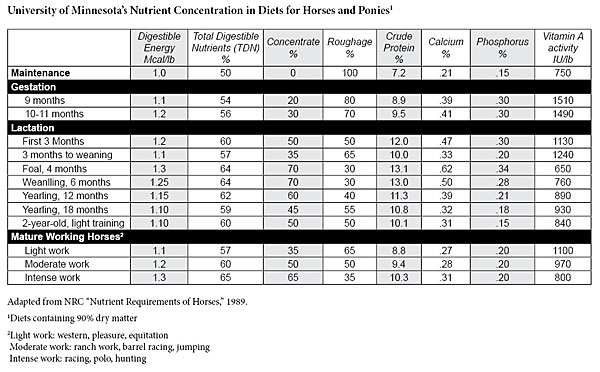Lately I have been thinking quite a bit about my horses’ nutrition and it’s about time to get them in a little better shape for the fall season that’s fast approaching. While I know personally what works for my two horses nutrition wise I wanted to do some research to learn more.
I came across The Equine Nutrition Nerd’s blog. She covers some very basic topics regarding equine nutrition that are very important to understand before you do some more in depth research. She had a great blog post about the equine digestive tract. It covered some crucial facts that everyone feeding horses should know.
While The Equine Nutrition Nerd covers many facts about nutrition I will discuss with you what I have found while feeding my own horses, and what people I know find works for them. So basically I am going to step away from the scientific side of nutrition and discuss real life feeding.
First off I want to say that all of my animals are a little fat. Not unhealthily fat, but they are definitely fed well. I have had horses that are hard to keep weight on and I have had horses that are hard to keep weight off of. This usually depends on the horses stress level and whether they are naturally high strung or more relaxed. So, I’m not claiming to be a pro in equine nutrition by any means, but I have figured out what does and doesn’t work through quite a bit of trial and error.
Right now my horses are all on full hay, they can eat as much as they want whenever they want. The hay they eat is mixed grass and alfalfa and has a protein concentration of about 20%. This is a fairly high protein hay, but the two horses I rodeo on are rode very hard and need that much protein. During school I will cut their hay consumption back and lower the protein in the hay to about 13% and supplement with oats. This keeps their protein high but allows them to lose a little bit of their ‘hay belly’ and get into competition shape. Both of the horses that I ride now are very easy keepers and maintain a healthy weight pretty easily.
The last horse I owned before Bubba always looked like he had swallowed a 50 gal. barrel. Don’t get me wrong, he was overweight, but he also just had a different build than other horses. He had a very wide rib cage, and when I tried to cut weight on him he would slim down to where you could start to see his ribs. Instead of cutting his food I would just make sure he had proper exercise and stayed in shape. I would rather have a healthy horse that looked fat than a skinny horse any day!
A few years ago I had a 7 year old mare that was very, very high strung. She was always nervous and constantly on the move if she was turned out. When I rode she would get so worked up and be in a full sweat after little work. I still had to ride her a lot though to tone her muscles and get her in shape, but because of how much energy she expended, she was hard to keep weight on. We found a grain that had a high protein and high fat percentage. She was on full hay and got 3 lbs. of grain two times a day. While this would maintain her weight, we wanted to put more on her (my dad’s favorite color is fat) so we started feeding her a third time at lunch. She gained quite a bit of weight and was very healthy.
There are a lot of different tips and tricks to helping your horse maintain a healthy weight. It really just depends on the horse and what works for them. While it can be costly, sometimes you just have to try a lot of different things before you find out what works for your specific horse.
Here is a chart that helps explain nutrient concentrations that horses and ponies get from different diets.
